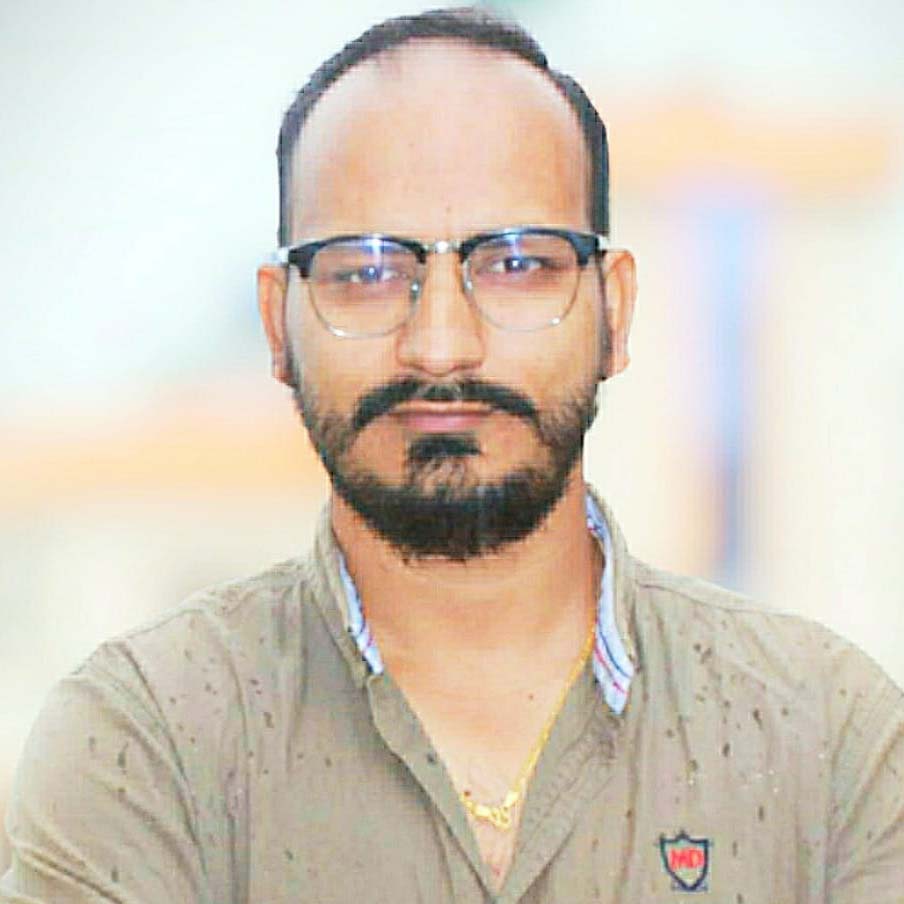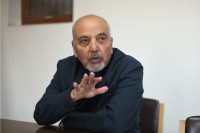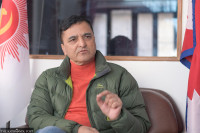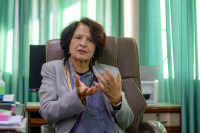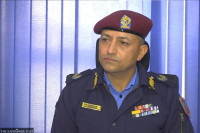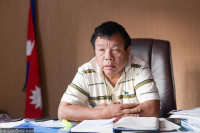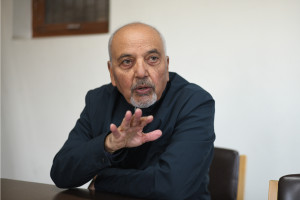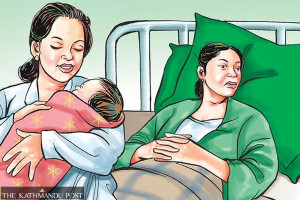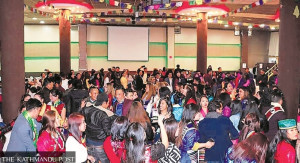Interviews
Bhandari’s position in UML is not as weak as some portray it
Oli might have helped with Bhandari’s ascent, but Oli’s political stature was also primarily built with Bhandari’s support.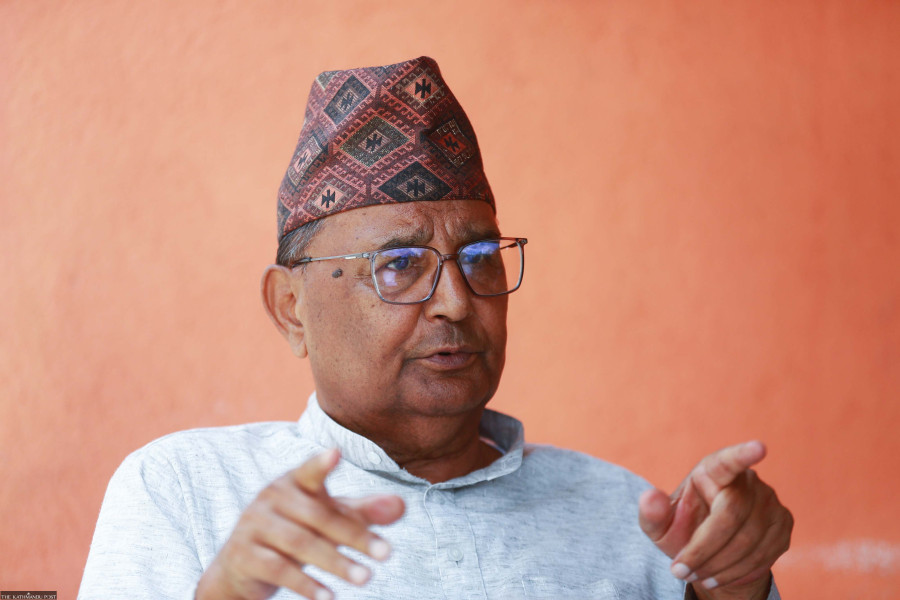
Purushottam Poudel
The internal dynamics of the ruling CPN-UML have grown increasingly tense. This follows former President Bidya Devi Bhandari’s announcement on 28 June that she would re-enter active politics. Since then, the UML has become divided into two camps—those who support her return and those who oppose it.
Although Bhandari appears much weaker than the establishment faction, she has repeatedly conveyed that she has already stepped forward and will not retreat. Meanwhile, the party committees have removed the 70-year age limit and the two-term leadership restriction, paving the way for Prime Minister and UML Chairman KP Sharma Oli to seek a third term as party leader. In light of these developments, the Post’s Purushottam Poudel spoke with veteran leftist leader Radha Krishna Mainali, who once worked closely with both Oli and Bhandari in the CPN-UML, about the current state of UML politics.
How do you view former President Bidya Devi Bhandari’s recent efforts to re-enter CPN-UML?
Bidya Devi Bhandari’s attempt to re-engage in active politics can be seen from two main perspectives. In one, having held the highest constitutional position, a former president should not revert to party-level politics. This is a legitimate concern, as it touches on the moral question of whether someone who has been at the top should descend to lower offices.
From a legal perspective, however, there is no restriction on her return to politics. The Constitution does not specify what type of individual should be president or outline their role after completing their term. All three individuals who have held the post of president so far have not shown the ability to stay above the interests of their parties during their tenure.
During most of her time as President, KP Sharma Oli was the prime minister. On several occasions, Bhandari endorsed unconstitutional moves, including approving the dissolution of Parliament, twice, under Oli’s recommendation, while blocking proposals by prime ministers from other parties. Our presidents have functioned more like party representatives than national heads of state. I believe this is not the fault of the individuals, but a flawed system in which political personalities are appointed to a supposedly neutral role.
In India, for instance, although political figures are often appointed as presidents, they do not return to active politics after their tenure. The Nepali constitution fails to clearly define the post-presidency responsibilities of such individuals, which is partly why this controversy has emerged.
While the constitution may not state it outright, there are also moral questions. If someone does not grasp the seriousness and dignity of the presidency, why accept the role twice?
Initially, this wasn’t widely discussed, but more recently, it has come to light that Bhandari had declined the proposal to be president when it was first made. Before nominating her in 2015, the idea of making Madhav Nepal president was considered. However, Nepal declined, saying he wished to stay in active politics, and thus the offer shifted to Bhandari.
She also revealed that, had she not been made president, she would have contested the party chairmanship during the 10th General Convention in 2021. This suggests that even while serving as the ceremonial head of state, she harboured a desire to become an executive leader.
While in office, she accepted everything Oli told her about internal party affairs. But once out of office, seeing the party’s weak state, she appears to have felt the need to re-engage politically. Further, Oli’s popularity has declined sharply. Given Oli’s lack of meaningful contribution to ordinary people’s lives, Bhandari may have sensed the urgency to assume leadership to revive the party, which was initially built through the sacrifices of her late husband, Madan Bhandari.
Her recent provincial tours also suggest that grassroots-level party cadres have urged her to take on leadership, which may have prompted her to make this decision.
You mentioned that cadres have encouraged her. But considering what we’ve observed in the Secretariat, Politburo, and Central Committee meetings, how can we say Bhandari has sizable support in the party?
I believe Bhandari’s position is not as weak as some portray it. Many UML leaders have refrained from openly supporting her due to Oli’s intimidation, promises of positions and perks, and other internal politics. The reluctance of some opportunistic leaders to support her doesn’t necessarily reflect her actual strength within the party.
In fact, during her press conference on Friday, she communicated her stance clearly and respectfully. As a result, I’m informed that some party leaders have begun to reassess their views of her.
In the current scenario, whereby there seems to be no alternative to Oli, Bhandari has emerged as a necessity for UML. Oli’s public image no longer seems capable of carrying the party forward. Even those opposing Bhandari’s comeback on political or moral grounds cannot question her integrity or raise corruption issues.
With public trust in politicians deteriorating due to financial scandals, Bhandari may be perceived as capable of restoring hope. Her experience in holding key constitutional offices also adds to her credibility.
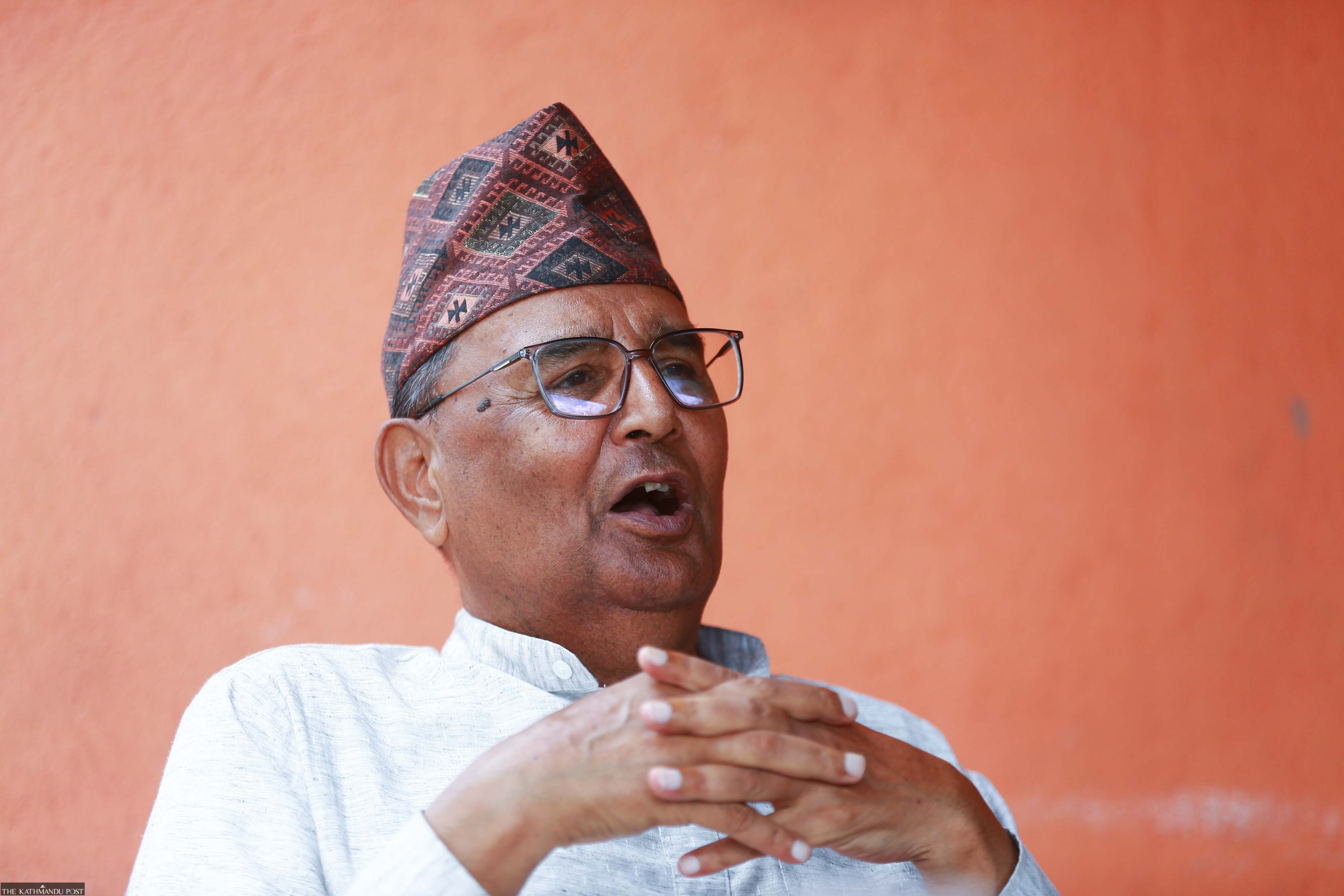
The party has already made an institutional decision not to allow Bhandari to return to active politics, yet she seems determined. Could the UML split under these circumstances?
I do not believe Bhandari will split the party—nor will Oli. Both have witnessed the consequences of past splits. Whether it was CP Mainali attempting to move beyond People’s Multiparty Democracy, or Madhav Nepal, who split the party despite serving as general secretary for 15 years, the results have not been good, either for the mother party or the breakaway party. If Oli and Bhandari can collaborate, the UML could achieve new heights of success. However, if internal fragmentation continues, that opportunity may be lost.
If Oli were willing to step into an advisory role and allow Bhandari to lead the party, she could manage things under his guidance. Having Bhandari as chair, with Oli’s support, would not necessarily bring radical change. Still, it could allow Oli’s strategic leadership to continue behind the scenes, while presenting a new public face for the party. For the democratisation of party operations, Oli must step down; it no longer seems feasible for the party to move forward under his leadership.
Former President Bhandari’s desire to return to active party politics is questionable. Although she has repeatedly expressed her wish to re-enter politics, she has yet to present a clear political vision, even after a month.
Whether she will be able to engage in politics actively is a different matter. Still, she should not delay sharing her outlook on political, economic, social, and foreign policy issues. And even that would not suffice—she must also clarify the political tools she intends to use to implement her ideas. While disclosing things in detail may not be possible initially, a broad outline must be made public. She needs to come forward with a structured programme.
Only after Bhandari expresses her political standpoint can current neutral-looking UML cadres and wider society determine whether they support her political comeback. She must explain what distinguishes her from the existing leadership. Merely repeating that she is returning to politics is not enough; the purpose of her return must be made clear. She is under an illusion if she believes she can pacify Oli with soft words. That approach may last a few days, but in the long run she must sound more forceful; otherwise, it would be better for her to remain silent. Oli will not hand over the party leadership on request. He has a history of sidelining political allies in pursuit of power—Bhandari could become just another name on that list.
Had Oli not embraced Madan’s doctrine of People’s Multi-Party Democracy or received Bidya Bhandari’s support following Madan’s death, it is highly unlikely that he would have reached the political height he enjoys today.
We must understand that Oli and Bhandari have significantly contributed to each other’s rise within the party. Oli might have helped with Bhandari’s ascent, but Oli’s political stature was also primarily built with the support of Bhandari.
How did you see the press conference she held on Friday, particularly regarding the party’s decision to annul the membership she had renewed a year ago?
Following the party committee’s decision not to grant her party membership, she held a press conference to present her position. In that appearance, she carried herself gracefully, identifying not as a former President but as the party’s former Vice-Chair. This suggests that rather than looking to provoke Oli, she is intent on moving forward with a degree of consensus. In doing so, she seemed willing to compromise on specific leadership aspirations.
Some believed that given their past relationship, Oli would easily concede to her aspirations for party leadership. That was a mistaken interpretation. Nevertheless, there are still spaces for Bhandari to be politically active.
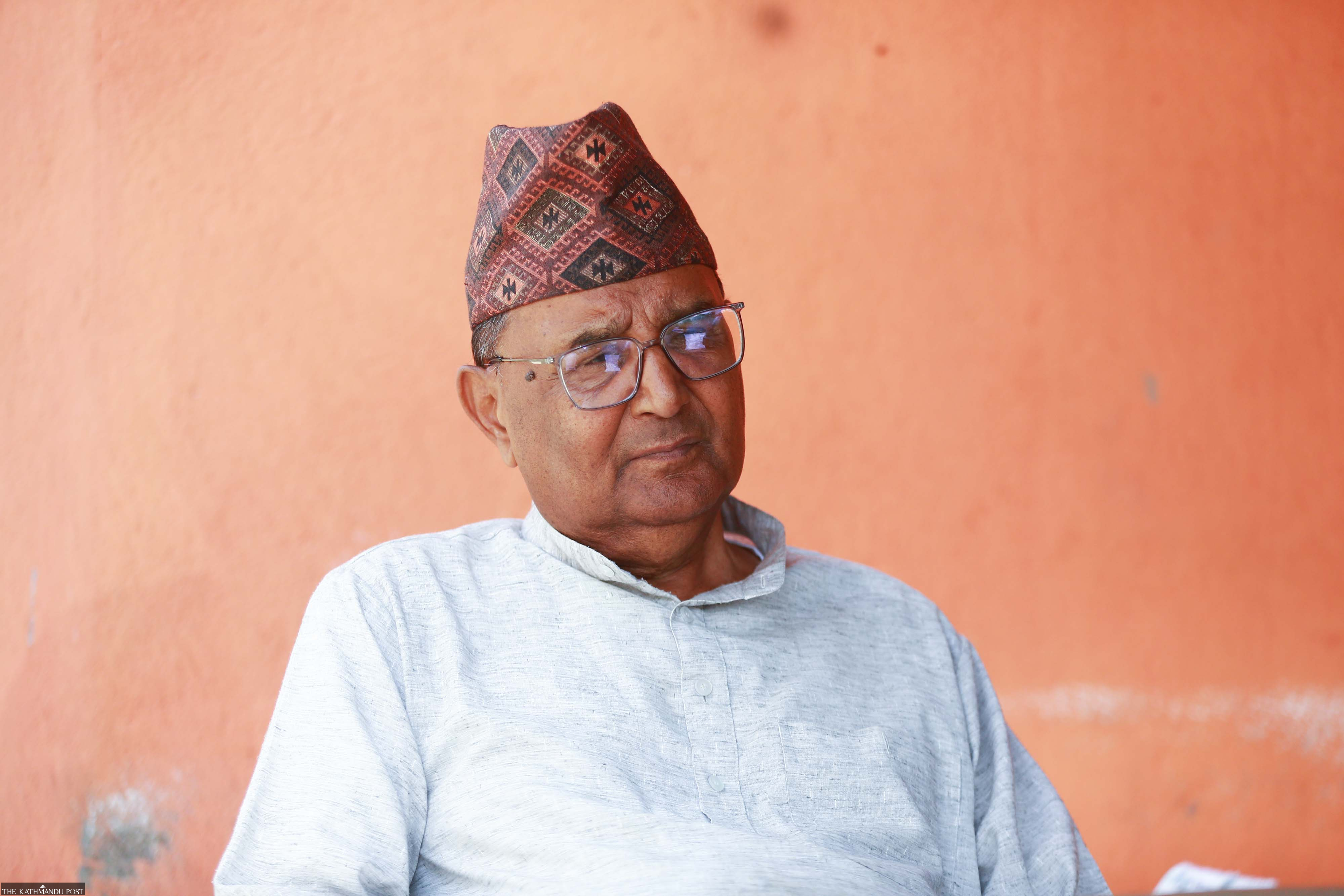
Where is this space that you are referring to?
While Oli may find it relatively easy to influence central leaders by offering party positions or various enticements, it will be more challenging to sway grassroots cadres participating in the upcoming Party Statute Convention. These cadres have the potential to challenge the decision made by the party’s Secretariat, Politburo, and Central Committee to amend the statute—particularly the provisions setting a 70-year age limit and restricting leadership to two terms.
Oli chose to lead the coalition government with the Nepali Congress precisely because holding the party’s Statute Convention and National General Convention while in office would help him lock in party leadership. The current government, in essence, is designed with the party conventions of the UML and the Nepali Congress in mind. Oli aims to hold the UML’s general convention during his premiership, while the Nepali Congress is expected to organise its convention after Sher Bahadur Deuba becomes prime minister.
However, the upcoming Statute Convention of UML can overturn such amendments. Similarly, it could lift the restriction on Bhandari’s return to active politics. Even if this does not happen at the Statute Convention, the issue will likely surface at the party’s General Convention.
If strong pro-Bhandari voices emerge in either of these forums, the party may be compelled to reconsider its present stance.
Some party insiders suggest Oli is trying to replace People’s Multi-Party Democracy propounded by Madan Bhandari, the late husband of Bidya Bhandari. That is why Bhandari is determined to re-enter active politics—to prevent such a development.
I don’t think that is the case. Oli’s nature is more rhetorical—he speaks grandiosely without necessarily backing it with substance. I don’t believe someone of his disposition can formulate a comprehensive ideological doctrine to redefine the entire party's direction.
Had he been moving in such a direction, we would have seen some signs of his ideological framework by now. But that is not the case. He did declare “Prosperous Nepal, Happy Nepali” as a slogan during his government, but that hardly qualifies as an ideological doctrine. Even as a slogan, it has been superficial—it has failed to leave any meaningful impact on the people's everyday lives.




 12.12°C Kathmandu
12.12°C Kathmandu